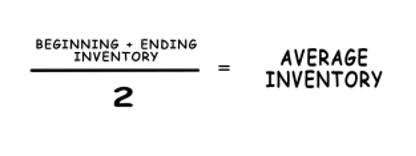
Operating activities are the transactions that enter into the calculation of net income. Examples include cash receipts from the sale of goods and services, cash receipts from interest and dividend income, and cash payments for inventory. Cash flow from operating activities (CFO) shows the amount of cash generated from the regular operations of an enterprise to maintain its operational capabilities. Below are the key differentiating points of preparing a cash flow statement using the direct or indirect method.

The Indirect Method:

Many accounting professionals like to use the indirect method over the direct method given how much more streamlined it is to prepare. The indirect method is preferred by the International Financial Reporting Standards (IFRS), making it a common choice both among small and large companies for compliance purposes. Instead, the direct method is more clear in how it’s calculated and can give you a better idea of your current cash standing. statement of cash flows direct vs indirect Under the U.S. reporting rules, a corporation has the option of using either the direct or the indirect method. However, surveys indicate that nearly all large U.S. corporations use the indirect method.
Would you prefer to work with a financial professional remotely or in-person?

If you’re a registered massage therapist, Operating Activities is where you see Accounting for Churches your earned cash from giving massages, and the cash you spend on rent and utilities. With the indirect method, you look at the transactions recorded on your income statement, then reverse some of them in order to see your working capital. You’re selectively backtracking your income statement in order to eliminate transactions that don’t show the movement of cash. When your cash flow statement shows a negative number at the bottom, that means you lost cash during the accounting period—you have negative cash flow.

Indirect vs Direct Statement of Cash Flows: A Clear Guide by Scalable CFO

The direct method simplifies the cash flow statement by directly reporting cash collected from customers and cash paid to suppliers and employees. This method enhances transparency, allowing you to see how cash flows from operating activities affect your business finances directly. By using this approach, stakeholders can assess liquidity, cash management, and overall financial health more effectively.
💡 Expert-Led Sessions📊 Build Financial Models⏳ 60+ Hours Learning
Meaning, even though our business earned $60,000 in October (as reported on our income statement), we only actually received $40,000 in cash from operating activities. For most small businesses, Operating Activities will include most of your cash flow. If you run a pizza shop, it’s the cash you spend on ingredients and labor, and the cash you earn from selling pies.
- This method might suit you if you’re looking for insights into financial performance as a whole.
- This is especially valuable for new businesses that do not have substantial historical financial data to use.
- The cash flow statement is one of the three important financial reports that show a company’s financial health – along with the balance sheet and income statement.
- This makes it suitable for companies seeking compliance and consistency in financial reporting.
- This foresight is crucial for maintaining operational efficiency and financial stability.
- Some transactions, such as the sale of an item of plant, may produce a loss or gain, which is included in the determination of net profit or loss.
Adjustments for Non-Cash Transactions
It can also give you the ultimate flexibility to run your business responsibly. While both are ways of calculating your net cash flow from operating activities, the main distinction is the starting point and types of calculations each uses. Remember the four rules for converting information from an income statement to a cash flow statement? Increase in Inventory is recorded as a $30,000 growth in inventory on the balance sheet. Now that we’ve got a sense of what a statement of cash flows does and, broadly, how it’s created, let’s check out an example.
With our expert support, you can develop accurate budgets and implement high-impact financial strategies, helping to accelerate your growth and enhance your financial acumen. Choosing between these methods can significantly affect the clarity and effectiveness of your financial reporting. As a busy founder, you need a streamlined approach that suits your business model and stakeholder needs. On the other hand, the indirect retained earnings balance sheet method is much easier for the finance team to create but harder for outside readers to interpret. It might be a better option for leaner teams who don’t have the time or resources to follow the direct method.
- With the direct method you begin with the actual cash your business received and paid out.
- Purchase of Equipment is recorded as a new $5,000 asset on our income statement.
- This is crucial for attracting investors, making informed decisions, and managing day-to-day operations effectively.
- Using the direct method, you keep a record of cash as it enters and leaves your business, then use that information at the end of the month to prepare a statement of cash flow.
- While it gives you more liquidity now, there are negative reasons you may have that money—for instance, by taking on a large loan to bail out your failing business.
Cash flows from operating activities show the net amount of cash received or disbursed during a given period for items that normally appear on the income statement. You can calculate these cash flows using either the direct or indirect method. The direct method deducts from cash sales only those operating expenses that consumed cash. This method converts each item on the income statement directly to a cash basis.
Missing even one transaction could mess up your cash balance, leading to problems in decision-making and future financial planning. However, the cash flow statement also has a few limitations, such as its inability to compare similar industries and its lack of focus on profitability. This information allows businesses to forecast future cash needs, make informed investment decisions, and track actual performance against budgeted targets. Consequently, the business ended the year with a positive cash flow of $1.5 million and total cash of $9.88 million.

